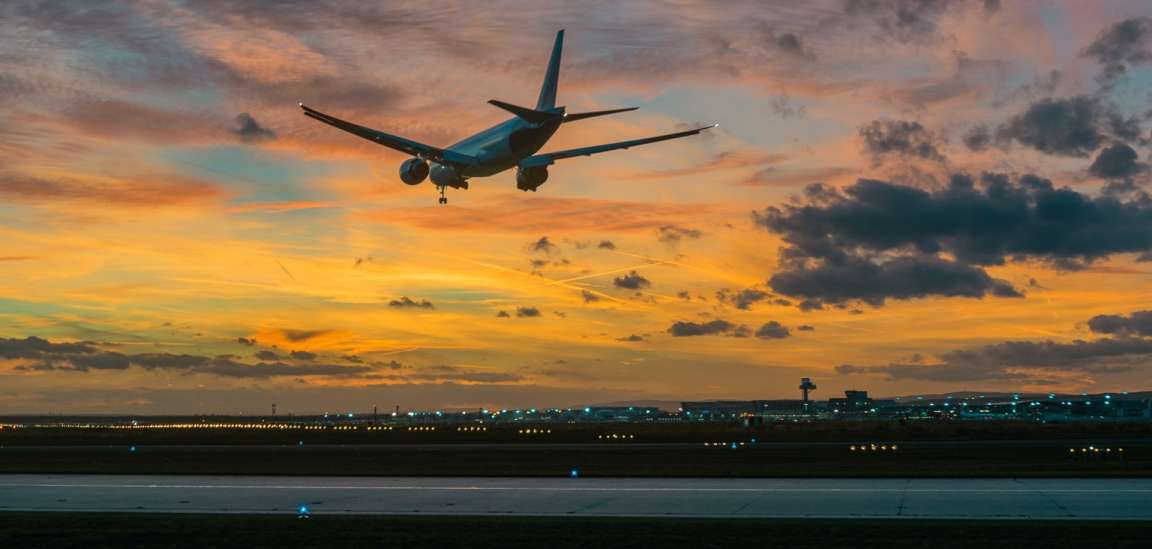DFS records up to 20 percent more traffic

Summer 2022 brings a sharp increase in air traffic volumes in German airspace. This can be attributed to the general increase in traffic in Europe. The war in Ukraine, shifts in traffic as well as military air traffic are also contributing to the increase.
Air traffic volumes have rebounded significantly in 2022 after two years of the COVID-19 crisis. More than 1.2 million aircraft movements under instrument flight rules were recorded in German airspace in the first six months of the year, which is around 76 percent of the level seen in 2019. "We expect a further increase for the whole year," said DFS CEO Arndt Schoenemann. "Overall, we expect traffic volumes in 2022 to be around 85 percent of the levels experienced in the pre-crisis year 2019. Things are taking off – much more steeply than we forecast."
"Traffic has doubled in individual sectors"
The increase in traffic is very unevenly distributed, however. While there are significantly fewer aircraft in lower airspace than in 2019, the number of overflights is almost back to pre-crisis levels – in some cases, it is significantly higher. Overflights pass through upper airspace, which begins at an altitude of around 7.5 kilometres and is largely monitored from the Karlsruhe control centre. In the southern part of upper airspace, around 20 percent more flights were logged in June 2022 than in June 2019. "In some sectors, there is twice as much traffic at peak times as in 2019," said Schoenemann.
There are several reasons for this uneven distribution. The war in Ukraine and airspace closures have led to a shift in traffic flows in Europe. Because the direct route to the east is no longer possible, EU-based airlines on their way to Asia, for example, now have to fly long detours that extend the flight path by up to five hours. This has increased the volume of traffic in German airspace by about ten percent. In addition, the French air navigation service provider introduced a new system at its Reims control centre. Therefore, the French control centre was able to control fewer flights in summer, with DFS handling some of the surplus. A labour dispute at the Polish air navigation service provider also led to a temporary shift in traffic. "The air transport system is under a lot of pressure at the moment. At DFS, we are doing our part to ensure that flights run as smoothly and on time as possible."
Maverick Award for civil-military cooperation
Due to the war in Ukraine, military traffic has also increased, which adds to the complexity in German airspace. Fixed corridors have been established for NATO flights, around which civilian air traffic has to be routed at times. In June, DFS received the Maverick Award for its achievements in managing military air traffic. This industry award is presented by the Air Traffic Control Association (ATCA) and the Civil Air Navigation Services Organisation (CANSO). "Since the foundation of DFS in 1993, civil and military air traffic have been controlled by a single institution – DFS," said Schoenemann. "This award shows that almost 30 years of cooperation are proving their worth in this crisis."
DFS recruits 140 controllers per year
DFS is well prepared for further growth. "We did not reduce staff during the pandemic. As we count as critical infrastructure under law, we have to provide our services even when there is minimal traffic. To meet this obligation, we need at least two-thirds of our air traffic controllers and 90 percent of our technicians," said Schoenemann. This is why around 100 young people started their air traffic controller training at DFS in each of the crisis years 2020 and 2021. In 2022 and the following years, we plan to hire around 140 new employees to start their training each year. "All applicants who want to safeguard the future of aviation with us are warmly welcome to apply."

.png)

.jpg)





Comments
There are no comments yet for this item
Join the discussion